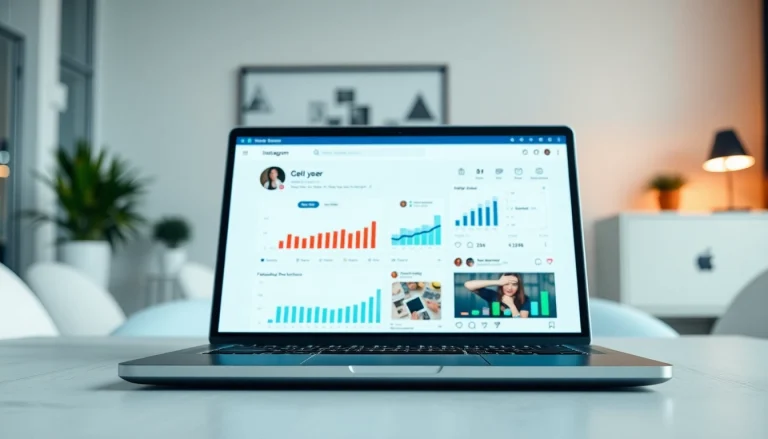Understanding Health Informatics
As the digital transformation of healthcare accelerates, understanding the intersections of health, technology, and information management becomes more crucial than ever. This field, commonly referred to as health informatics, encompasses a variety of practices that use data, information, and knowledge to enhance human health outcomes and improve the delivery of healthcare services. It is a multifaceted discipline that combines aspects of computer science, information science, and healthcare management. For individuals or organizations seeking in-depth insights into health informatics, www.informaticsview.com serves as a valuable resource that explores these concepts in greater detail.
What is Health Informatics?
Health informatics is the interdisciplinary study of how information technology can be utilized to improve healthcare. It involves the use of technologies such as electronic health records (EHRs), data analytics tools, and telehealth systems to collect, manage, and analyze health information. By optimizing the way information is shared and processed within the healthcare system, health informatics aims to enhance the quality of care provided to patients. Essentially, it seeks to align information systems with clinical needs, thereby facilitating better decision-making processes for healthcare providers.
History and Evolution of Health Informatics
The roots of health informatics can be traced back to the 1960s when the first computer systems began to emerge in healthcare settings. Initially, these systems were rudimentary and primarily focused on billing and basic record-keeping. However, over the decades, advancements in technology paved the way for more sophisticated systems. The integration of clinical decision support systems in the 1980s and the establishment of EHRs in the 1990s signified monumental shifts in how healthcare providers interacted with and utilized data. Today, the discipline continues to evolve with the integration of artificial intelligence, machine learning, and big data analytics, allowing for real-time data usage in patient care.
Key Terminologies in Health Informatics
To navigate the field of health informatics effectively, it is essential to understand key terminologies:
- Electronic Health Records (EHRs): Digital versions of patients’ paper charts which streamline the clinician’s access to vital health information.
- Clinical Decision Support (CDS): Tools that provide tailored clinical knowledge to healthcare providers to support patient care decisions.
- Telemedicine: The use of telecommunication technology to provide remote clinical services.
- Health Information Exchange (HIE): The electronic sharing of health-related information among organizations.
- Interoperability: The ability of different information systems and software applications to communicate and exchange data effectively.
- Big Data: Large volumes of data that can be analyzed to reveal patterns, trends, and associations in healthcare.
Applications of Health Informatics
Health informatics plays a pivotal role in improving various aspects of healthcare. Its applications are diverse, ranging from patient care enhancements to more efficient data management strategies.
Use Cases in Patient Care
One of the most significant impacts of health informatics is seen in patient care. Through the implementation of EHRs, healthcare providers have immediate access to patients’ medical histories, test results, and treatment plans. This interconnectedness leads to better-coordinated care. For example, a study by the Office of the National Coordinator for Health Information Technology reported that EHRs improve the quality of care by reducing medication errors by up to 30%. Telemedicine further enhances patient care by allowing patients to consult with healthcare providers remotely, increasing access to services, especially in underserved areas.
Data Management in Healthcare
Effective data management is at the heart of health informatics. Healthcare organizations generate vast amounts of data daily, and correctly managing this data is essential for operational efficiency. Health informatics solutions enable the aggregation of data from different sources, allowing for comprehensive analysis and reporting. This transforms raw data into actionable insights, which can drive policy decisions and improve patient outcomes. For instance, data from wearable devices can be integrated into EHRs, providing clinicians with real-time health information for informed decision-making.
Health Informatics Tools and Technologies
The health informatics field leverages various tools and technologies that facilitate the management, sharing, and analysis of health information. Examples include:
- Electronic Health Records (EHRs): Centralized systems for managing clinical data.
- Patient Portals: Online applications that allow patients to access their health information and communicate with healthcare providers.
- Clinical Decision Support Systems (CDSS): Analytical tools that assist healthcare providers in making informed treatment decisions based on evidence-based guidelines.
- Telehealth Solutions: Platforms that enable distant healthcare services, improving access and convenience for patients.
- Data Analytics Software: Tools that process and analyze large datasets to extract meaningful insights and trends in health outcomes.
Challenges in Implementing Health Informatics
While the benefits of health informatics are significant, several challenges must be addressed for successful implementation and sustainability.
Data Privacy and Security Concerns
As healthcare organizations adopt more digital solutions, ensuring data privacy and security becomes paramount. Health information is sensitive, and breaches can have severe consequences, including identity theft and compromised patient safety. The Health Insurance Portability and Accountability Act (HIPAA) outlines stringent requirements for protecting patient health information. Consequently, organizations must implement robust cybersecurity measures and educate employees about data safeguarding practices to mitigate risks effectively.
Interoperability Issues among Systems
Interoperability, or the ability of various health information systems to communicate efficiently, is a significant challenge. Many healthcare organizations use disparate systems that often do not integrate well, leading to fragmented patient records. This lack of integration can hinder care delivery and increase the likelihood of errors. Achieving true interoperability requires standardized data formats and APIs that facilitate seamless communication across platforms.
Resistance to Change in Healthcare Organizations
Resistance to change is a common hurdle in implementing health informatics solutions. Healthcare professionals may be accustomed to traditional methods and could be hesitant to adopt new technologies. To counteract this resistance, healthcare leaders must foster a culture that embraces innovation. Training programs should also address the knowledge gap, emphasizing the value and benefits of new informatics tools.
Best Practices for Health Informatics Professionals
Professionals in health informatics must adopt best practices to maximize the effectiveness of their roles.
Staying Updated with the Latest Technologies
The rapid evolution of technology in healthcare necessitates continuous education and professional development. Health informatics professionals should actively seek out training opportunities, attend industry conferences, and participate in online courses to stay informed about emerging technologies and methodologies.
Effective Communication with Healthcare Teams
Clear communication among healthcare team members is critical to the success of health informatics initiatives. These professionals serve as the bridge between IT departments and clinical staff. Therefore, they must articulate technical concepts in a manner that is understandable to non-technical stakeholders. Regular meetings and collaborative projects can foster better relationships and enhance teamwork.
Developing User-Centric Solutions
User-centric solutions are those designed with the end-user’s needs in mind. Health informatics professionals should engage with healthcare providers to understand their workflows and pain points before implementing new technologies. This approach ensures that the implemented solutions enhance, rather than disrupt, existing processes.
Future Trends in Health Informatics
The landscape of health informatics continues to evolve rapidly. Emerging trends are shaping the future of healthcare delivery.
Artificial Intelligence in Healthcare
Artificial intelligence (AI) is transforming health informatics by providing advanced data analysis capabilities. AI algorithms can analyze vast datasets to identify trends, predict patient outcomes, and streamline administrative processes. For example, AI-powered predictive analytics can anticipate patient admissions, allowing hospitals to allocate resources more efficiently. Additionally, AI-driven applications can enhance clinical decision-making by providing evidence-based recommendations tailored to individual patients.
Telehealth and Remote Monitoring
Telehealth has gained significant traction, particularly during the COVID-19 pandemic. The convenience of virtual appointments and remote monitoring of patients’ conditions has made telehealth an attractive option for many. The future of health informatics will likely see a continuation of this trend, supported by advancements in remote patient monitoring technologies that allow for real-time health tracking and intervention when necessary.
Integration of Big Data and Health Informatics
As healthcare organizations collect more data than ever, leveraging big data analytics will become essential. By analyzing data from various sources, including EHRs, wearable devices, and social determinants of health, providers can gain insights into population health trends and improve personalized care. The successful integration of big data into health informatics practice will enable healthcare professionals to make more informed decisions and deliver better patient outcomes.








